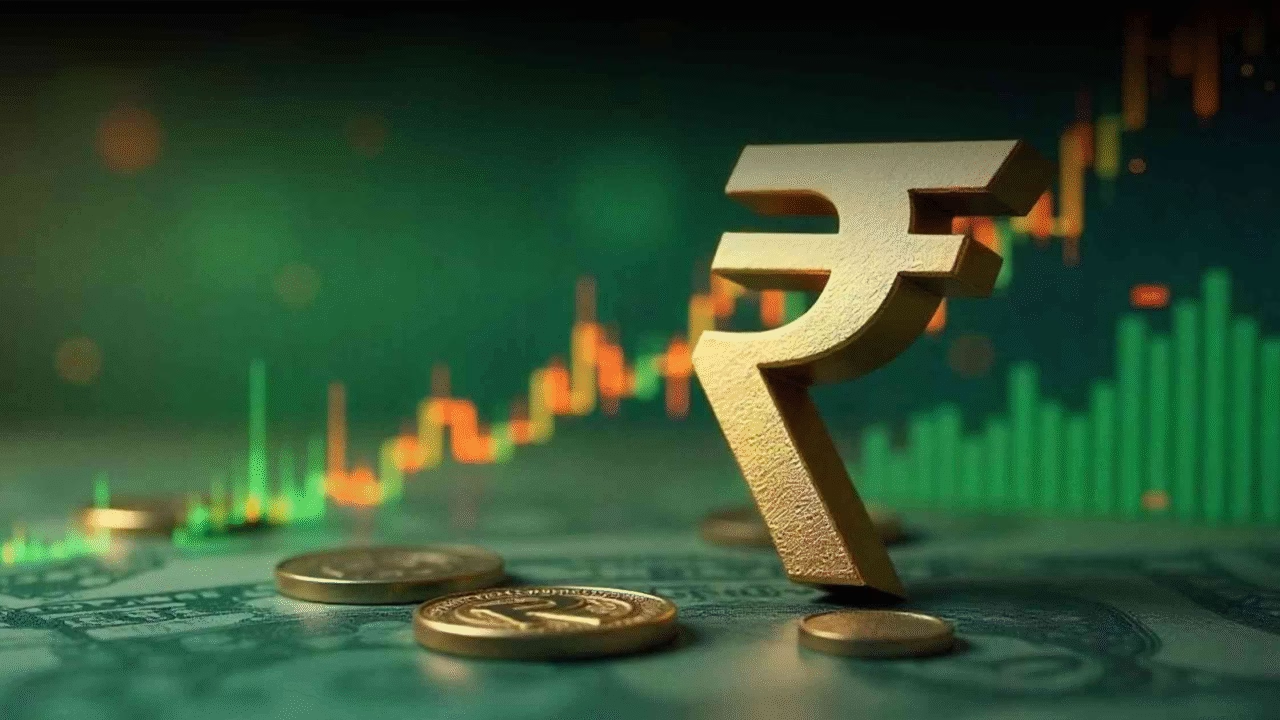The Indian rupee commenced the week with a strengthened position, supported by optimism in global markets and a fresh influx of foreign investments into domestic equities.
Following a period of volatility, the recovery of the local currency indicates a rise in investor confidence and a favorable change in the macroeconomic environment.
Market Dynamics Favor the Rupee
On Monday, the rupee gained nearly 20 paise against the U.S. dollar, trading at approximately 82.75, bolstered by a weakening dollar and positive sentiment throughout Asian markets. Analysts credit this appreciation to two primary factors: the return of foreign portfolio investors (FPIs) to Indian markets and a heightened global risk appetite as concerns regarding a stringent U.S. Federal Reserve policy diminish.
The dollar index, which measures the dollar’s performance against six major currencies, fell below 104, providing emerging-market currencies such as the rupee with some relief. This development aligns with expectations that the Fed may halt further interest rate increases, facilitating capital movement into higher-risk assets.
Strong Foreign Inflows
Indian equities have significantly benefited from global optimism. In August, foreign portfolio investors (FPIs) invested over $2.1 billion into domestic markets, spurred by robust corporate earnings, stable macroeconomic indicators, and strong consumer demand. With India’s GDP growing at 7.8% in Q1 FY26, the economy continues to be one of the fastest-growing globally, making it an appealing destination for investment.
Foreign inflows not only bolster the rupee but also alleviate concerns regarding India’s expanding current account deficit. Additionally, substantial foreign exchange reserves—currently at $644 billion—equip the Reserve Bank of India (RBI) with sufficient resources to manage volatility and uphold currency stability.
Oil Prices and Global Factors
Another element supporting the rupee is the relative steadiness in crude oil prices. Brent crude has remained within a range of approximately $75–77 per barrel, which lessens the burden on India’s import expenses. Given that the country imports nearly 85% of its oil requirements, stable crude prices directly mitigate pressure on the rupee and the inflation outlook.
At the same time, global optimism regarding economic recovery, particularly in China and Europe, has increased demand for emerging market currencies. A rebound in global trade and the alleviation of supply-chain constraints are anticipated to further bolster the rupee in the short term.
Outlook for Investors
Currency analysts warn that although the rupee’s short-term outlook appears favorable, external risks persist. Geopolitical tensions, fluctuations in global oil markets, and any unforeseen hawkish stance from the Federal Reserve could negatively impact sentiment. The RBI is likely to maintain its intervention strategy to smooth out sharp fluctuations.
For investors, the strength of the rupee indicates stability in the broader Indian economy, fostering favorable conditions for equity markets. Export-oriented sectors may experience short-term challenges due to a stronger rupee, but companies focused on domestic markets and consumer-driven industries are likely to benefit.
The recent strengthening of the rupee is indicative of a combination of global optimism, foreign investments, and stable macroeconomic conditions. Despite ongoing challenges, India’s resilient economy, consistent policy framework, and strong investor interest suggest a balanced and positive outlook for the currency in the upcoming months.

